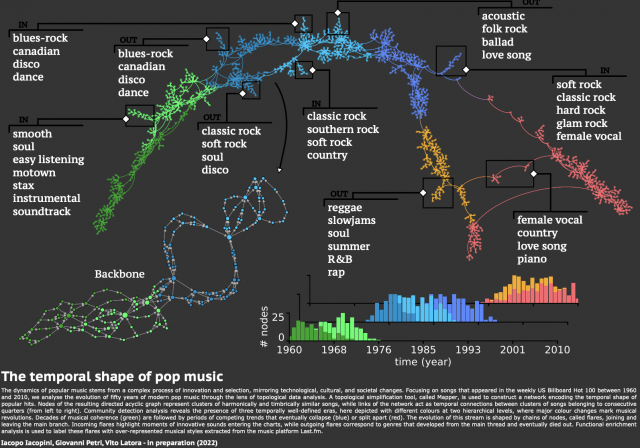Print Visualizations at Data Stories 2026
The temporal shape of pop music

Author:
Iacopo Iacopini
The dynamics of popular music stems from a complex process of innovation and selection, mirroring technological, cultural, and societal changes. Focusing on songs that appeared in the weekly US Billboard Hot 100 between 1960 and 2010, we analyse the evolution of fifty years of modern pop music through the lens of topological data analysis. A topological simplification tool, called Mapper, is used to construct a network encoding the temporal shape of popular hits. Nodes of the resulting directed acyclic graph represent clusters of harmonically and timbrically similar songs, while links of the network act as temporal connections between clusters of songs belonging to consecutive quarters (from left to right). Community detection analysis reveals the presence of three temporally well-defined eras, here depicted with different colours at two hierarchical levels, where major colour changes mark musical revolutions. Decades of musical coherence (green) are followed by periods of competing trends that eventually collapse (blue) or split apart (red). The evolution of this stream is shaped by chains of nodes, called flares, joining and leaving the main branch. Incoming flares highlight moments of innovative sounds entering the charts, while outgoing flares correspond to genres that developed from the main thread and eventually died out. Functional enrichment analysis is used to label these flares with over-represented musical styles extracted from the music platform Last.fm.